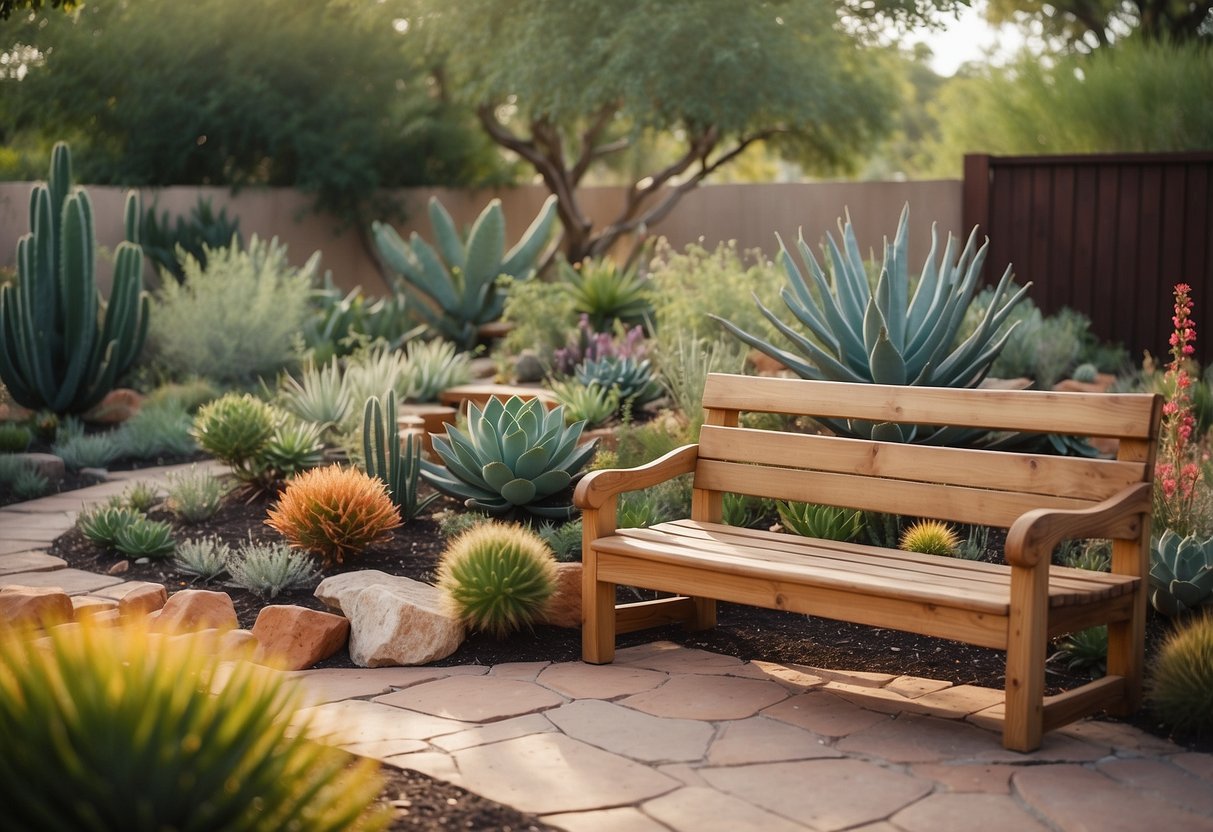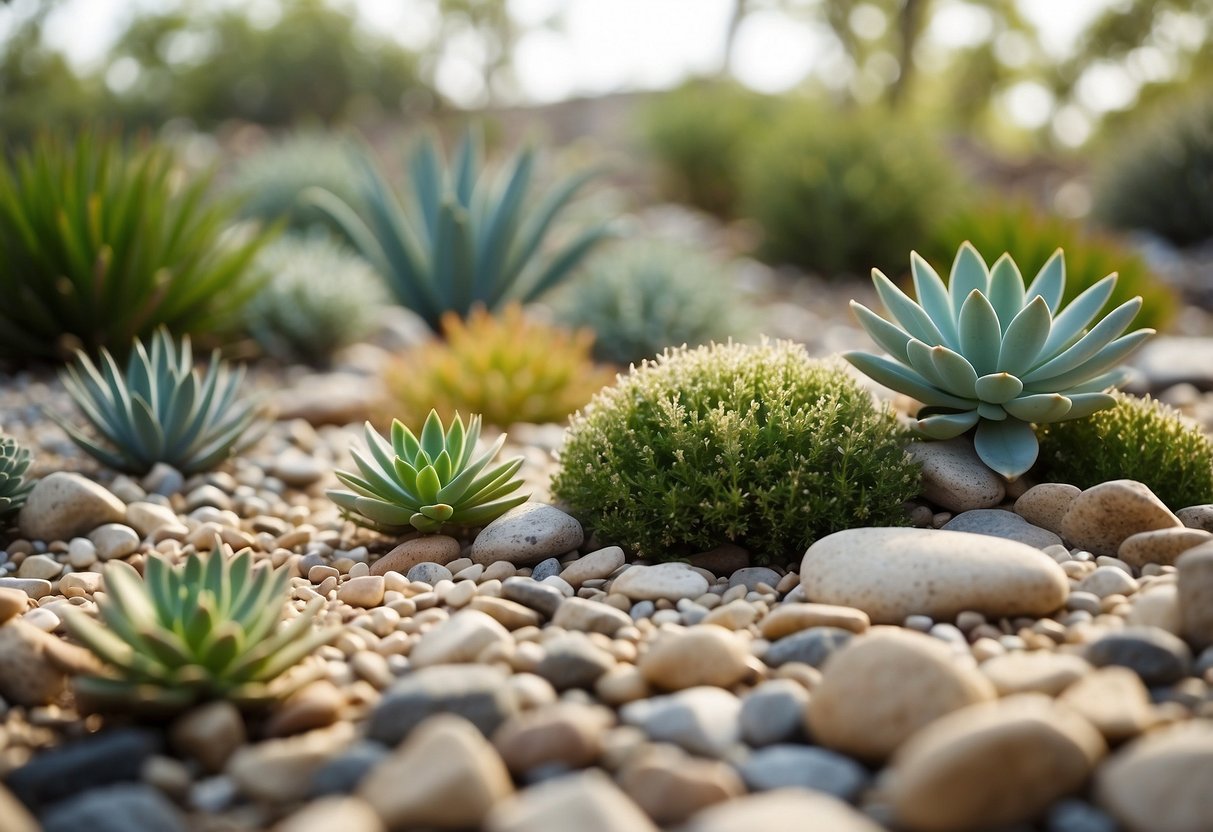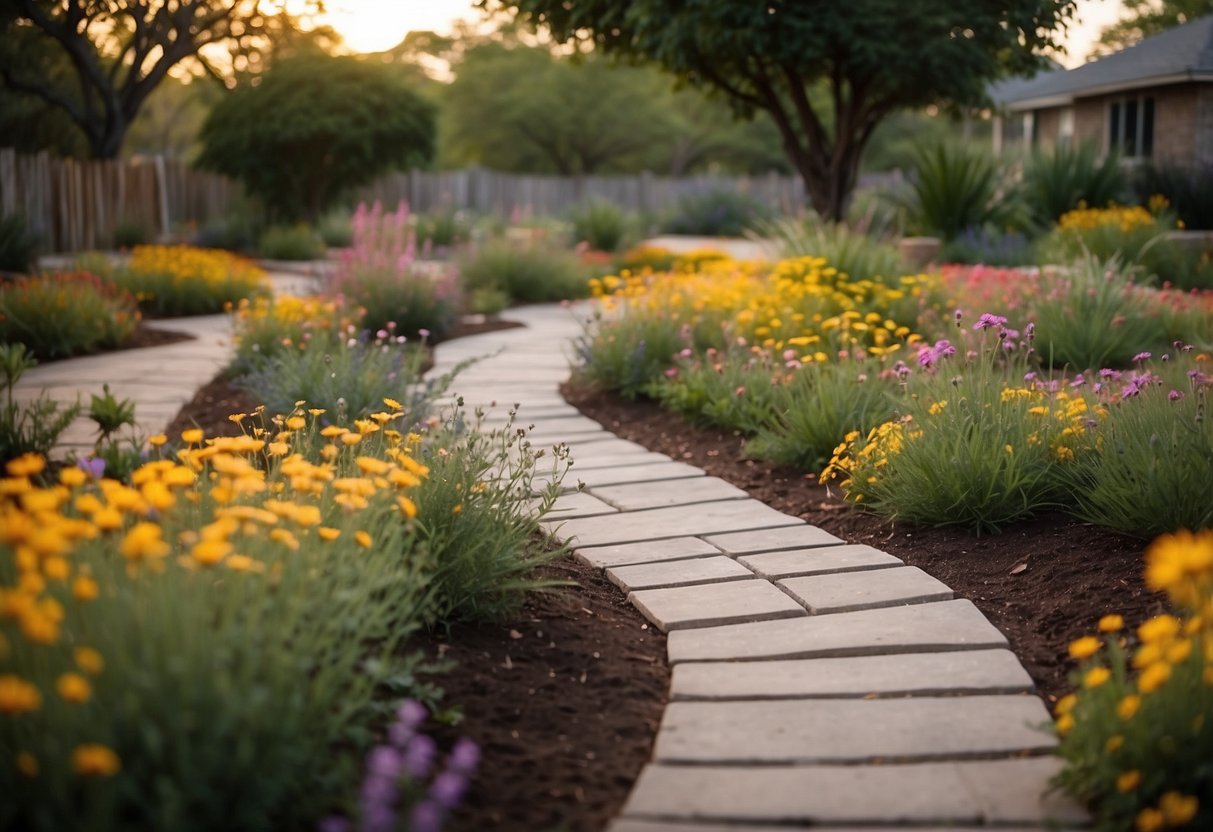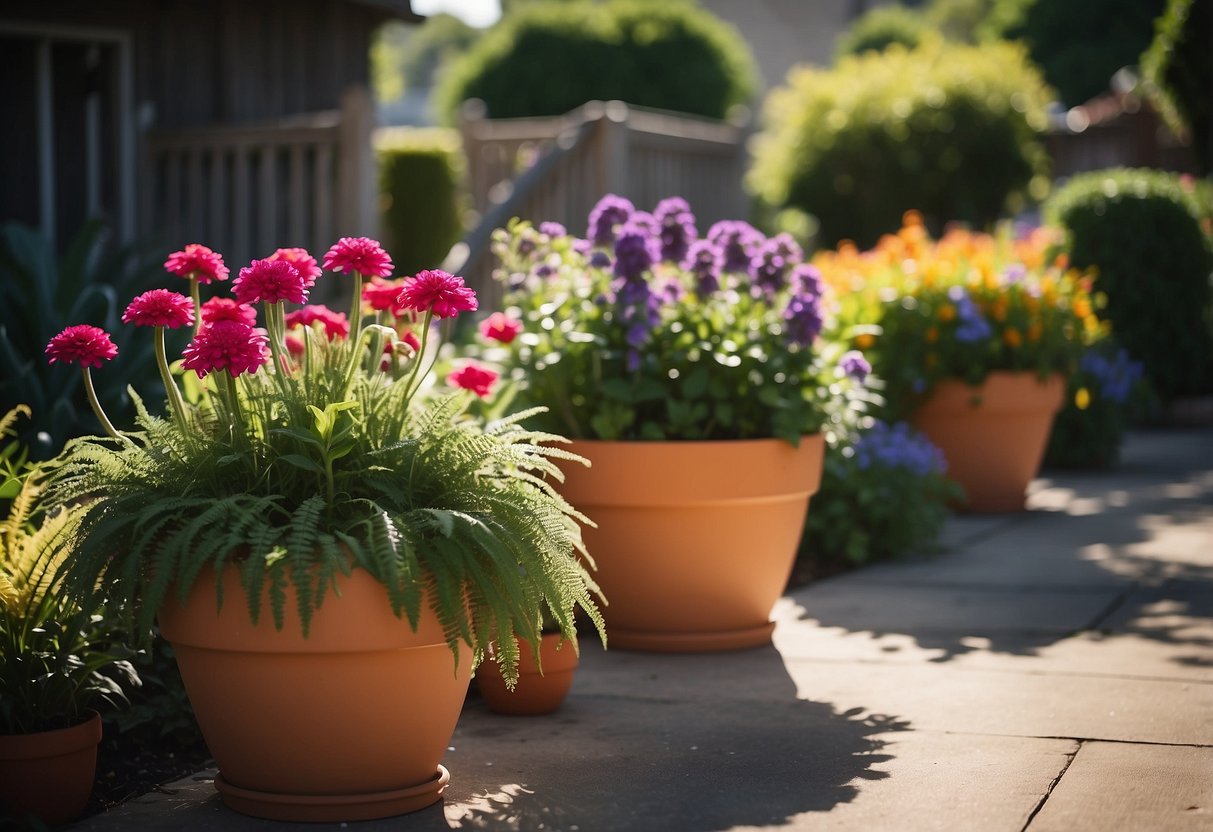Front Garden Ideas Texas: Create a Lush and Vibrant Entryway
Transforming your front yard in Texas can seem like a big job, but it’s an exciting opportunity to enhance your home’s curb appeal. Whether you’re looking to add native plants, incorporate drought-resistant features, or create a welcoming walkway, there are many ways to make your front garden both beautiful and practical.

What are some of the best ideas for crafting a stunning front garden in Texas? From choosing the right plants to arranging them in a visually pleasing way, you’ll find that a well-planned garden can thrive in Texas’s unique climate while making a bold statement. Dive in and explore the possibilities to unlock the full potential of your front yard.
1) Drought-Tolerant Plants

It’s important to pick plants that can survive with little water. Consider using Texas Mountain Laurel, which has purple-blue flowers and attracts pollinators. You can also try Dwarf Yaupon Holly, as it’s heat-tolerant and works well as a border plant.
For a touch of color, think about adding coneflowers or zinnias to your garden. These plants not only look great but also require minimal water.
2) Texas Sage

Texas Sage is a fantastic choice for your front garden. This evergreen shrub has gray-green leaves that look great all year. After rain, it blooms with beautiful purple flowers, earning it the nickname “Barometer Bush.”
Planting Texas Sage is easy. Use well-draining soil and place it in bright, indirect light. Make sure to water it regularly, keeping the soil moist but not soggy.
You don’t need to add fertilizer. Texas Sage thrives without extra nutrients. Just loosen the surrounding soil, water it well, and let it rest for a few days. For further details, you can visit Better Homes & Gardens on how to plant and grow Texas Sage.
3) Agave

Agave plants can be a striking addition to your Texas front garden. They come in various sizes and colors, from bright green to gray-blue.
Agave plants are drought-tolerant, which makes them perfect for Texas’ hot climate. They require minimal watering and care.
Besides, they can deter deer from your garden since deer typically avoid eating most agave species. For an array of ideas, check out these landscape designs.
4) Colorful Xeriscape

A colorful xeriscape can make your Texas front garden both beautiful and water-efficient.
Choose drought-tolerant plants like Texas Sage, known for its silvery leaves and striking purple flowers. Lantana is another great option, attracting butterflies with its vibrant blooms.
Use rocks or gravel as ground cover. They help retain moisture while adding texture to your garden.
Mixing greens, blues, and purples can create a visually appealing landscape that thrives in the Texas heat. Browse more ideas for xeriscaping your garden.
5) Rock Garden

Rock gardens add texture and visual interest to your front yard. By using different sizes, colors, and shapes of rocks, you can create a unique look.
Native Texas plants work well in rock gardens. They can handle the sun and require less water. Adding low-maintenance plants like succulents and cacti can make your yard both beautiful and easy to care for.
For more ideas, check out these rock garden designs.
6) Mulched Pathways

Mulched pathways are a great addition to any Texas front yard. They help you navigate your garden with ease and create a clean, natural look.
Creating a mulched pathway is simple. Start by marking the path with pegs. Spread mulch evenly and smooth it with a rake. This keeps the pathway tidy and safe to walk on.
Mulch also helps retain moisture and suppress weeds. This means less maintenance for you and a healthier garden. For more ideas, check out this guide.
7) Native Wildflowers

Texas is home to a wide variety of stunning native wildflowers that can brighten up your front garden. Some popular choices include the classic bluebonnet, which is the state flower of Texas.
Other colorful options are Texas phlox, spider lilies, and lantanas. These wildflowers are easy to grow and attract butterflies and bees to your garden.
For a pop of evening beauty, consider adding evening primrose or Gulf Coast hibiscus. Adding these native wildflowers will make your front yard vibrant and welcoming.
Check out more beautiful Texas wildflowers here.
8) Container Gardens

Container gardens are a great way to spruce up your front garden in Texas.
You can use a mix of colorful flowers like lantana, which thrives in containers and Texas heat. Another option is the hardy rosemary, known for its drought-tolerant nature.
For a bold look, try combining vibrant flowers with herbs. This not only adds beauty but also practicality to your garden.
9) Succulent Border

Creating a succulent border can add a fresh look to your Texas front yard. You can plant various types of succulents along the edge of your garden beds or pathways.
Use species like agave, aloe, or echeveria. These plants are drought-tolerant and thrive in Texas heat.
Pair them with rocks or gravel to highlight their unique shapes and colors.
For more ideas, check out these front yard succulent garden ideas.
10) Raised Beds

Raised beds are a great option for your Texas front garden. They offer good soil drainage and make it easy to reach your plants. You can use old planks, bricks, or even a simple kit to build them.
Raised beds help you control the soil quality. This is important in Texas, where soil can be tough to work with. They also keep weeds and pests at bay, making gardening more enjoyable.
Adding native Texas plants like bluebonnets or Indian blankets to your raised beds can bring a touch of local charm. They can also help you create a welcoming entryway by framing your front door with colorful blooms.
Choosing The Right Plants For Texas Climate

To create a thriving front garden in Texas, you need to pick plants that can handle the region’s hot and dry conditions. Opt for drought-tolerant varieties and native plants to ensure success.
Drought-Tolerant Plants
Texas heat can be intense, so choosing plants that need less water is smart. Cacti and succulents are great options. They store water in their leaves and thrive with minimal care. Yucca and agave are other fantastic choices; they not only look striking but can also withstand prolonged dry spells.
Another excellent option is the Lantana. This bright and colorful plant is a favorite in Texas gardens. It can survive on very little water once established and adds vibrant hues to your front yard.
Plants like lavender and sage also do well in Texas climates. They can handle the heat and require less frequent watering, making them perfect for the region.
Native Texas Plants
Using native plants in your garden is beneficial because they are already adapted to the local climate and soil. The Turk’s cap is a native shrub that loves the heat. It features bright red flowers and can grow up to 5 feet tall.
The Hinckley columbine, also known as ‘Texas Gold‘, is another wonderful native plant. With its buttercup-yellow flowers, it can light up shady areas in your garden. It thrives in Texas zones 5 to 8, making it rare and special.
Texas sage, a hardy shrub, produces lovely purple flowers and is tough against drought. It’s a great addition if you want a resilient and beautiful plant.
For more information on these plants, you can visit resources like the Better Homes & Gardens or Leafy Place.
Designing Your Front Garden

Designing a front garden in Texas requires a mix of native plants and thoughtful hardscaping elements. Using the right focal points and incorporating durable materials can create a standout appearance.
Creating Focal Points
Add visual interest to your garden by establishing focal points. Rock gardens are a great option, using native stones to blend with the environment. Choose stones of various sizes and shapes to make your garden both unique and eye-catching.
Additionally, think about plant choices that draw the eye. For example, hardy succulents or flowering shrubs can stand out while withstanding Texas heat.
Ornamental grasses help create movement and texture, making your garden more inviting. Position these plants around seating areas or pathways for maximum impact.
Incorporating Hardscaping Elements
Incorporating hardscaping elements like walkways, patios, and retaining walls can make your front yard both beautiful and functional. Use materials like stone or gravel which require minimal maintenance and can endure harsh weather.
For walkways, consider using pebbles or pavers, which can be cost-effective and attractive. These materials can also connect different areas of your garden, making it easy to navigate.
Add features like large urns or decorative boulders to give your garden character. These elements don’t need much upkeep and can serve as a contrasting element to your plant choices.
Lastly, think about installing light fixtures along pathways or near focal points. This not only enhances safety but also highlights your landscaping efforts, providing a welcoming touch.







